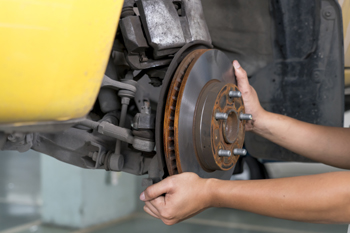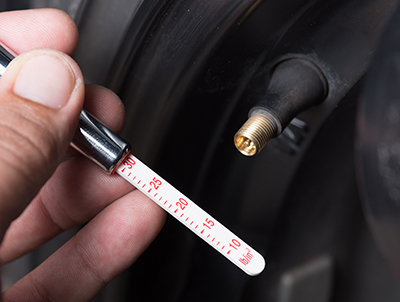When it comes to vehicle safety, few systems are more critical than your brakes. Whether you’re cruising on the highway or navigating stop-and-go traffic, your brakes must perform flawlessly. That’s why regular brake inspections are not just a good idea—they’re essential for keeping you, your passengers, and everyone else on the road safe.

Why Brake Inspections Matter
Your brake system doesn’t fail all at once—it wears down gradually. The problem is, most drivers don’t notice the warning signs until it’s too late. Regular inspections help catch small issues early, before they become expensive (or dangerous) problems.
What a Brake Inspection Includes
A thorough brake inspection typically covers:
-
Brake pads and shoes – checked for thickness and wear
-
Rotors and drums – inspected for warping, cracks, or grooves
-
Brake fluid – examined for level and contamination
-
Brake lines and hoses – checked for leaks or cracks
-
Calipers and hardware – inspected for damage or seizing
Signs You May Need a Brake Check Sooner
While regular inspections are crucial, there are also warning signs to watch for between visits:
-
Squealing or grinding noises
-
Longer stopping distances
-
Soft or spongy brake pedal
-
Vibrations when braking
-
Brake warning light on your dashboard
If you notice any of these, don’t wait—schedule a brake inspection immediately.
How Often Should You Get Your Brakes Inspected?
As a general rule, it’s a good idea to have your brakes inspected every 12,000 miles or at least once a year. However, if you do a lot of city driving or tow heavy loads, you may need inspections more frequently.
Peace of Mind You Can Count On
Getting your brakes inspected regularly not only helps avoid costly repairs, but also gives you peace of mind every time you get behind the wheel. At [Your Auto Repair Shop Name], our certified technicians provide thorough, honest brake evaluations to ensure your safety.
Need a brake check? Contact us today to schedule your inspection and drive with confidence.
Lim’s Auto Body is a full service auto body and mechanical repair shop locally owned and operated in Largo, Florida. For more information, go to our web site www.limsautobody.com or call (727) 422-3232.

